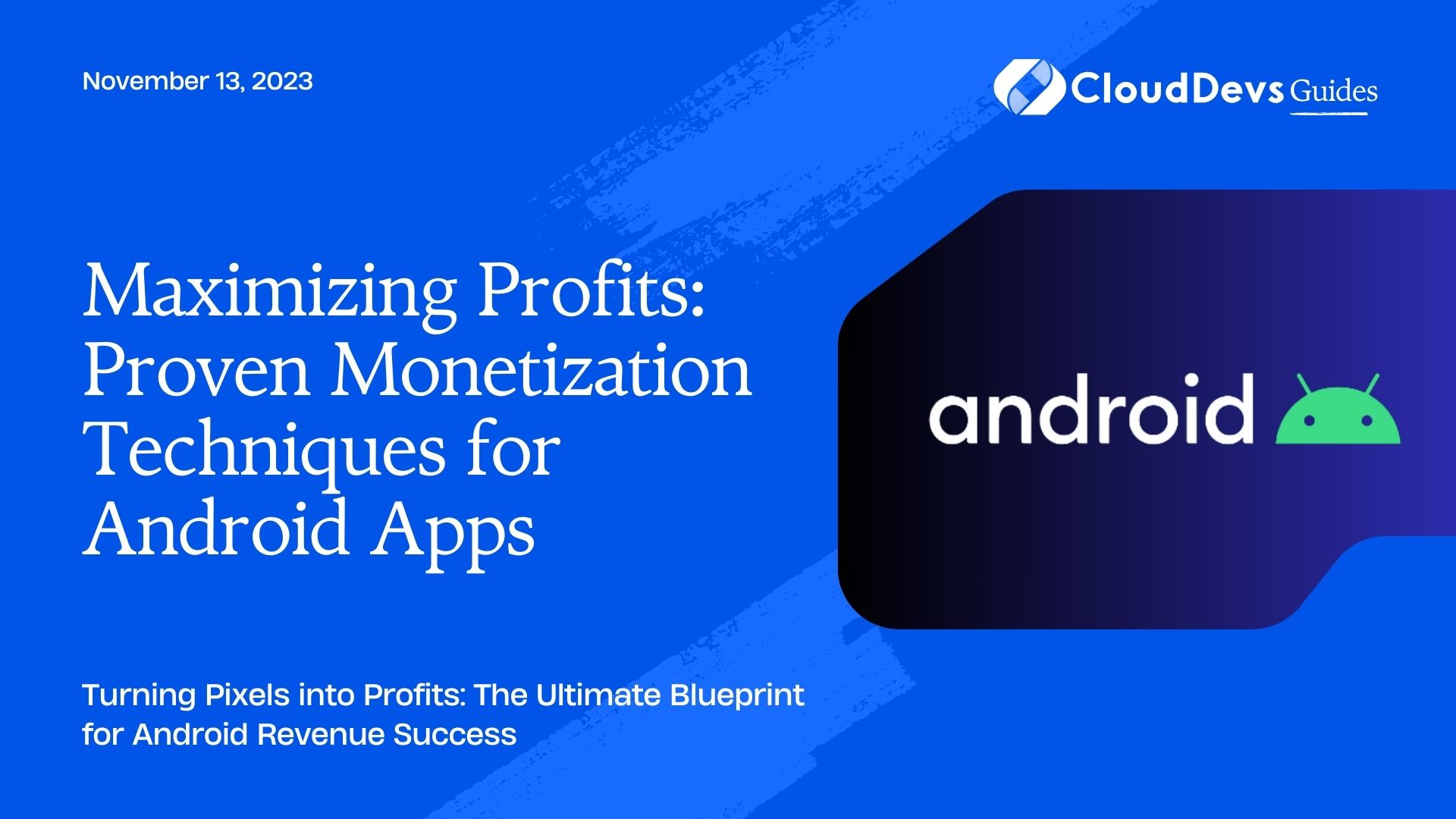Maximizing Profits: Proven Monetization Techniques for Android Apps
In today’s digital age, Android apps have become a gold mine of opportunities for developers. Whether you’re looking to hire Android developers or build an app on your own, the landscape is ripe with potential. From games and social media to utilities and enterprise solutions, apps have turned into a thriving ecosystem on their own. But, how do you convert this potential into tangible income? App monetization is the answer.
Table of Contents
Understanding the monetization strategies available can significantly impact the growth and profitability of your app. If you’re planning to hire Android developers, it’s crucial they’re well-versed in these strategies. This article will delve deep into various monetization techniques, with examples to offer a clearer perspective.
1. In-app Ads
A widely used strategy, in-app advertisements allow developers to earn revenue by showing ads within the app.
Example: Candy Crush Saga, a globally recognized game, employs this strategy by showing video ads between levels or as a way to earn extra moves.
Pros: No upfront costs for users, which can increase the user base.
Cons: Can be intrusive and affect user experience.
2. Freemium Model
Freemium apps are free to download and use. However, they offer premium features at a certain cost.
Example: Spotify provides users with a free version of their music streaming app but with ads and limited skips. For an ad-free experience with added benefits, users can upgrade to Spotify Premium.
Pros: Gives users a taste of the app before committing financially.
Cons: Might not attract users to purchase the premium version if the free features are satisfactory.
3. In-app Purchases
Allow users to buy virtual items, features, or content directly within the app.
Example: Pokémon GO enables players to purchase PokéCoins, which can then be traded for in-game items like Poké Balls, Incense, and more.
Pros: Directly monetizes engaged users.
Cons: Only a small percentage of users usually make in-app purchases.
4. Subscription Model
This model offers periodic (often monthly or yearly) content or services for a fee.
Example: Netflix is a subscription-based service where users pay monthly to access a library of movies and TV shows.
Pros: Provides a consistent revenue stream.
Cons: Requires continuous content or feature updates to keep subscribers engaged.
5. Paid Apps
Users pay upfront to download the app. This is more common for apps that offer unique features or content.
Example: Monument Valley, a beautifully designed puzzle game, charges users to download and experience its mesmerizing levels.
Pros: Immediate revenue from users.
Cons: Might deter potential users due to the upfront cost.
6. Affiliate Marketing & Referrals
Promote other products or apps and earn a commission on the sales or leads generated.
Example: Many shopping aggregator apps provide product links to eCommerce platforms. When users buy through those links, the app developers earn a commission.
Pros: Can be integrated seamlessly into content-rich apps.
Cons: Revenue generation is dependent on user conversions on third-party platforms.
7. Sponsorships & Partnerships
Collaborate with brands to incorporate their content or branding in your app, in return for sponsorship.
Example: Fitness apps can partner with sportswear brands to showcase their products, providing both branding and revenue opportunities.
Pros: Enables the creation of unique content and features funded by the sponsor.
Cons: Requires alignment between the app’s audience and the sponsor’s target market.
8. Crowdfunding
If you have a unique app idea, you can pitch it to the public. If they see the potential, they might fund its development.
Example: Apps like Kickstarter and Indiegogo have seen several projects, including mobile apps, getting funded by the public.
Pros: Helps in gauging public interest and provides funds for development.
Cons: Requires extensive marketing and a compelling pitch.
Conclusion
Monetizing an Android app requires a blend of strategy, understanding of your target audience, and continuous optimization. If you’re planning to hire Android developers, it’s imperative they grasp these nuances. What works for one app might not necessarily work for another. The key is to test different strategies, gather feedback, and iterate based on performance and user preferences.
When done right, app monetization can not only sustain the growth of your app but also turn it into a lucrative venture. As the Android app ecosystem continues to flourish, understanding and leveraging these strategies—and possibly looking to hire Android developers who are adept in them—will be crucial for developers worldwide.
Table of Contents






